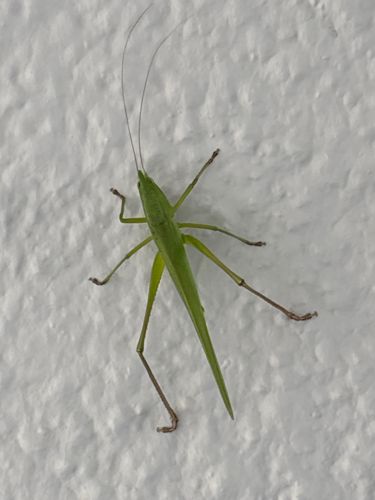Katydid
Scientific Name: Tettigoniidae (a family of insects, specific genus/species would require closer examination)
Order & Family: Order: Orthoptera, Family: Tettigoniidae
Size: Typically range from 1 to 7 cm (0.4 to 2.8 inches) in body length, with some tropical species being much larger.

Natural Habitat
Found in various habitats with dense vegetation, including forests, grasslands, gardens, and shrublands. They prefer areas with tall plants, trees, and bushes where they can easily camouflage.
Diet & Feeding
Mostly herbivorous, feeding on leaves, flowers, and sometimes fruits. Some species are omnivorous, also consuming small insects like aphids, or even carrion.
Behavior Patterns
Katydids are primarily nocturnal and are well-known for the distinctive "singing" or "stridulation" of the males, produced by rubbing their wings together to attract mates. They are generally solitary but can be found in groups in areas with abundant vegetation. They are excellent at camouflage, blending in with foliage due to their body shape and color.
Risks & Benefits
Generally harmless to humans. They can occasionally be considered agricultural pests if their populations are very high and they feed on crops, but this is rare. As part of the ecosystem, they are beneficial as a food source for birds, bats, and other predators, and they play a role in plant consumption and nutrient cycling.
Identified on: 8/19/2025